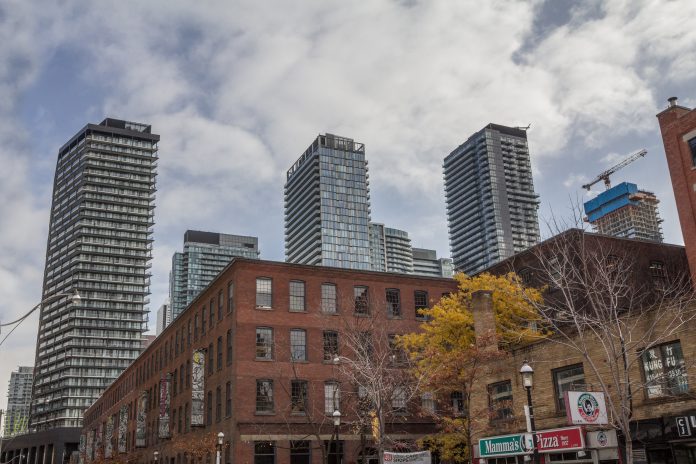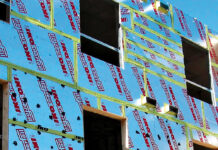By Claudia Pedrero and Darya Maltseva
Robins Appleby LLP
When choosing their next project, developers have the option of converting an existing building to condominium instead of undertaking a completely new build. For example, many loft-style condominiums are the result of an existing commercial or industrial building converted for residential use. Conversions can involve little-to-no new construction or the existing structure could be significantly renovated and incorporated into a larger new building. While conversion projects certainly have their appeal, the additional complexities resulting from a conversion project are not widely known or appreciated, particularly as they relate to new home warranties provided under the Ontario New Home Warranties Plan Act (the ONHWP Act).
New homes in Ontario receive statutory warranties according to the ONHWP Act which give homeowners time-limited coverage for defects in work, materials and structural defects. As of January 2018, warranty coverage under the ONHWP Act extends to residential condominium conversion projects. If a project falls within the definition of a “residential condominium conversion project” in the ONHWP Act then the warranty coverage extends to the project’s new and pre-existing elements, except that pre-existing elements do not receive the first-year warranty coverage for workmanship and materials. However, not all types of residential conversions qualify for warranty protection.
Determining whether a conversion project will receive warranty coverage largely depends on the use of the pre-existing elements to be incorporated into the condominium. If a project is considered a residential condominium conversion project, then the developer must submit additional funds, materials, and studies to Tarion prior obtaining approval and enrollment in the home warranty plan. Such approval and enrollment is required of all developers before they go to market. As a result, developers intending to take on a conversion project should consult with Tarion early on in their pre-development process to understand whether their project will receive the statutory warranties and therefore whether they must take the additional steps required for conversion projects.
What conversion projects receive the statutory warranty?
Tarion’s Bulletin 18 – Residential Condominium Conversion Projects describes a developer’s obligations when enrolling a condominium conversion project with Tarion. Bulletin 18 is often relied on by developers to understand their obligations for enrolling a condominium conversion project, however the ONHWP Act and its regulations are ultimately determinative.
Bulletin 18 explains that the warranties only extend to conversions from non-residential uses (such as commercial buildings, offices). Conversions that can receive warranty coverage also include hotels, rooming houses, retirement homes, medical institutions and places of worship. Bulletin 18 further provide that rental residential buildings which are converted to condominiums are not eligible for warranty coverage because there is typically little to no new construction when these buildings are converted to condominium. However, the regulations to the ONHWP Act include single household dwellings and other residential uses in the list of eligible uses that can receive warranty coverage.
Essentially, the exclusion of residential properties from warranty coverage relates only to rental residential units when the conversion required minimal construction. In turn, this means that not all residential uses are excluded from condominium conversion rules. Certain prescribed uses attract coverage including single household dwellings, boarding houses, dormitories, hotels, rooming houses, religious or medical institutions, places of worship, retirement or group homes, or correctional institutions. Even though such uses have a residential component, they qualify for warranty coverage and therefore trigger the additional requirements for conversion projects.
UNIQUE ASPECTS OF CONVERSION PROJECTS
Warranty coverage excludes pre-existing elements
Residential condominium conversion projects include both pre-existing and new elements. Pre-existing elements are those that will be incorporated into the residential condominium conversion project, existed before the project began, and whose primary use before the commencement date was non-residential or listed in the ONHWP Act regulations. Similar to newly constructed condominiums, new elements receive warranty coverage. Meanwhile, pre-existing elements do not receive the first-year warranty coverage for workmanship and materials because pre-existing elements cannot be expected to perform as new. The reduced warranty coverage must be disclosed to purchasers of conversion units in a developer’s sales materials.
Additional reports and assessments
In addition to the materials Tarion requires of all builders applying for enrollment, developers of residential condominium conversion projects are responsible for undertaking additional investigative work and preparing reports for Tarion’s approval prior to the sale of any units and prior to receipt of approval and enrollment by Tarion. These additional materials include a property assessment report, capital replacement plan and pre-existing elements fund study prepared by an architect or engineer. As the review time for these additional materials can take 90 days or more (not considering additional time for revisions) it is important to allow for sufficient lead-up time for approval prior to a sales launch.
Pre-existing elements fund
Builders of residential condominium conversion projects are required to contribute funds into a pre-existing elements fund which is used to pay for major repairs to certain pre-existing elements. The amount a builder must contribute to the fund is determined through an anticipated major repair schedule for the pre-existing elements. The estimated cost for major repair or replacement of pre-existing elements within the first seven years after condominium registration becomes the amount of the pre-existing elements fund. Such amount is confirmed in the builder’s pre-existing elements fund study. The pre-existing elements fund is a cash contribution by the developer which cannot be passed on to buyers and must be funded by the date the project’s first unit is enrolled in the warranty program.
Moral of the story
Before undertaking a residential condominium conversion project, developers should be aware of the unique aspects of conversion projects and the additional requirements as they relate to the new home warranty. Engaging with Tarion early on in the pre-development process to determine whether a conversion project will be treated as a residential condominium conversion project and allowing for sufficient time to complete additional requirements will help reduce hurdles to a sales launch.


Claudia Pedrero is a lawyer, and Darya Maltseva is a student at Robins Appleby LLP, Toronto. robinsappleby.com












